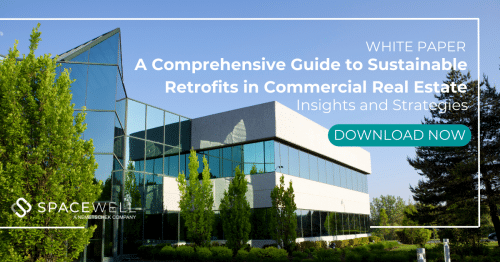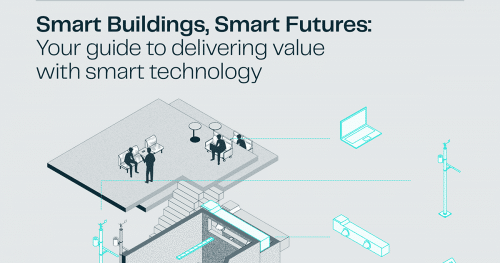Data-Driven ESG Strategy: How Facilities Management Can Lead the Way
Welcome to our eGuide on ESG in the workplace, real estate, and facilities management! With this guide, we hope to provide you with the knowledge and tools necessary to get your Environmental, Social and Governance (ESG) initiatives off the ground.

Download your free eGuide:
By leveraging building performance data, facilities managers – still often perceived as ‘reactive firefighters’ – can pivot to ‘proactive risk mitigators.’ This shift in their role allows them to become key contributors in achieving corporate real estate ESG strategic objectives. These objectives include data-driven footprint optimization, improving energy efficiency, reducing waste, digitalizing operations, decarbonization, engaging employees, and achieving future-of-work goals.
Perspectives from Industry Voices

The demand for ESG reporting – voluntary, regulatory, or by law – is increasing across all business sectors. With ESG reporting, organizations can demonstrate their commitment to responsible stewardship and transparency for investors and other stakeholders.
However, many of these stakeholders are wary of the ESG claims made by organizations due to the lack of standards. To address this issue, several initiatives from regulators and standard setters have been established. These include the UN 2021 United Nations Climate Change Conference’s International Sustainability Standards Board, the European Union Non-Financial Reporting Directive (NFRD), and others.
Another major challenge associated with ESG reporting is the presence of data silos for many of the underlying systems that feed data into annual reports. Gathering data from a well-integrated smart building platform is a good starting point. Such data has better alignment and leads to greater control and trustworthy ESG reporting.
Erik Ubels
Smart Building Consultant, former CIO Deloitte Netherlands

Office real estate is currently facing an unprecedented challenge. On the one hand, hybrid work is reducing space needs. On the other hand, a lot of office stock doesn’t work anymore for today’s economy due to rising sustainability expectations and modern-era tenant preferences.
The imbalance between supply and demand is putting a green premium on smart, sustainable buildings. And this is making ESG an essential value driver for commercial real estate.
Rodolphe d’Arjuzon
MD & Global Head of Research at Verdantix

ESG in the workplace and facilities management has a lot to do with a shared purpose. Having a common goal ensures that people’s assignments are meaningfully connected to the bigger picture. This connection to something larger also helps boost employee engagement and satisfaction.
Against this background, workplace experience is no longer solely the responsibility of Facilities Management, as it was before the pandemic. We need to collaborate across functions and share knowledge and aspirations, so that employees are supported and empowered to live a better life at work, in an environment where they feel valued and safe. Technology and the data derived from it plays a crucial role in creating such an energizing high-performing workplace.
Momcilo (Momo) Pavlovic
Workplace Support Leader, Ingka Group (IKEA)








